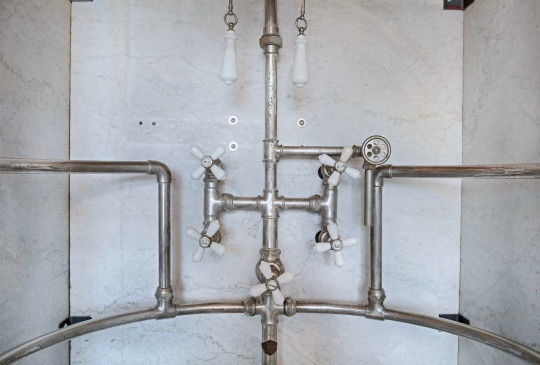It was uncommon for homes built before the 1920s to have a shower at all. For many homeowners, adding a shower (even to an existing bathtub) was an unnecessary expense. There was the bill for the extra plumbing fixture and installation, and there was the hidden cost of constantly repairing wood wainscot and plaster, the principal wall covering in pre-World War I bathrooms. The only thing between these surfaces and the shower spray was a rubber or duck-canvas curtain.” Even where indoor plumbing was common, such as the big cities, showers were used primarily by men, not women. Showers had been in use in barracks, gymnasiums, and bathhouses since at least the 1880s, but those places were generally inhabited by men. The shower was strongly associated, therefore, with athleticism and men, and the streams of water were widely felt to be harmful to women, who were considered the weaker sex, delicate and fragile compared to men. In 1914 home décor authority Charles E. White, Jr. wrote that “…some constitutions cannot stand the rigors of shower bathing, a practice which should be resorted to only under the advice of a physician.” Well up until the 1930s, most women would not consider showering, so what need was there for a shower fixture in the home? Bathing was done in the tub. But showers did have a purpose in the home for those who believed they had medicinal purposes and thought the sprays had “therapeutic value for ‘stimulating the proper action of the skin.’ In time, though, showering was linked to personal hygiene and their use increased. The germ theory, confirmed in the 1880s, trickled down to the public as the sanitary movement of the early 20th century.” This began to have an effect on how people outfitted their bathrooms.










